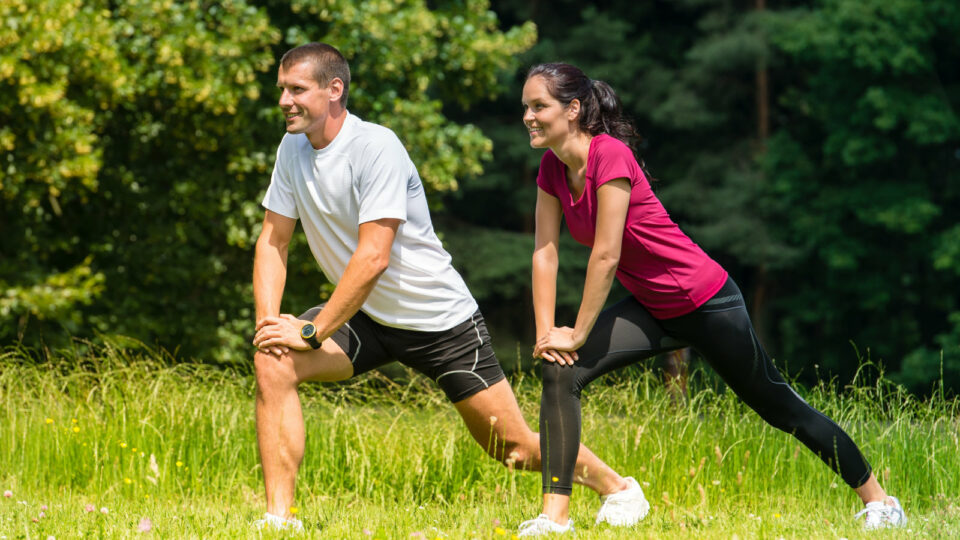Running is a fantastic way to improve cardiovascular health, but it’s no secret that it can put a strain on your joints. To keep running for years to come, it’s crucial to prioritise joint health. In this article, we’ll delve into pre-run and post-run routines designed to protect your joints and keep you running strong.
By incorporating these practices into your running regimen, you can minimise the risk of joint pain and injury, improve your performance, and enjoy a healthier, more sustainable running journey. So, whether you’re a seasoned marathoner or a casual jogger, these tips will help you keep your joints in top shape from start to finish.
Table of Contents
Importance of Joint Health in Running
In running, joint health is paramount, as the repetitive impact can strain joints over time, potentially leading to conditions like arthritis and tendinitis. Understanding the mechanical load on joints, particularly the knees, hips, and ankles, is essential for both novice and seasoned runners. These joints absorb significant forces during a run, and without proper care, the wear and tear could lead to discomfort and chronic issues.
To safeguard against such outcomes, integrating routines and support systems that focus on joint health is advisable. One effective method to enhance joint care is incorporating supplements that support joint health, such as Joint Support from Pure Health Research. This product is formulated with ingredients that can provide the necessary nutrients to aid in the maintenance and recovery of joint tissues.
Adopting a proactive approach to joint health not only helps in reducing the risk of injuries but also ensures that runners can continue their activity long-term without debilitating joint issues. This makes understanding and investing in joint health practices an essential aspect of any runner’s routine.

Pre-Run Routines
A robust pre-run routine prepares your joints for the physical demands of running, reducing the risk of injuries and enhancing overall performance. Here’s how you can protect and prepare your joints before you hit the pavement:
1. Dynamic Stretching
Unlike static stretches, dynamic stretches involve movement and are ideal before a run. Begin with leg swings: hold onto a stable object for balance, and swing one leg forward and back, gradually increasing the range of motion. This warms up the hip joints. Follow with lateral leg swings across your body to engage the inner and outer thigh areas.
2. Joint-Specific Exercises
Focus on exercises that target the joints most impacted by running:
- Knees: Perform walking lunges to strengthen the muscles supporting your knees, enhancing stability.
- Ankles: Do ankle circles and heel-to-toe rocks to improve range of motion and flexibility.
- Hips: Include hip circles and walking high knees to activate the hip flexors and extensors.
3. Progressive Warm-up
Start with a brisk walk for about 5 minutes, then transition to a light jog. This gradual increase in pace helps raise your body temperature and blood flow to the muscles and joints, effectively prepping them for the intensity of your run.
4. Incorporate Functional Movements
Use movements that mimic running mechanics to engage the whole body. High skips and butt kicks activate the major muscle groups used in running, ensuring your joints are moving smoothly and are ready for the exercise ahead.
5. Hydration
Begin hydrating well before you start running. Proper hydration helps maintain the lubrication in your joints, reducing friction and wear during the run.
By dedicating around 10 to 15 minutes to these pre-run routines, you can significantly enhance your joint flexibility and strength, setting a strong foundation for a safe and effective run.

Post-Run Routines
After completing your run, it’s crucial to engage in a post-run routine to aid your joints in recovery and prevent stiffness and injury. This cooldown phase is as essential as the warm-up and deserves careful attention to ensure your joints remain healthy and ready for your next run.
1. Gradual Cooldown
Begin by reducing your pace to a gentle jog or a brisk walk for about 5 to 10 minutes. This gradual transition helps in the removal of lactic acid buildup in the muscles and maintains circulation, easing the joints back into a normal state of stress.
2. Static Stretching
After your heart rate has normalised, focus on static stretches that target the muscles around your key joint areas—hips, knees, and ankles. Hold each stretch for 20-30 seconds:
- Hip Stretch: Perform a pigeon pose or a seated hip stretch to relieve tension in the hip flexors and extensors.
- Hamstring Stretch: Sit on the ground and reach for your toes, keeping your legs straight to stretch the back of your thighs, which supports your knees.
- Calf Stretch: Use a wall or a curb to press your foot against, keeping the heel down and toes up, to stretch the calf muscles and relieve pressure on the ankles.
3. Use of Recovery Tools
If possible, use tools such as foam rollers or massage balls to roll out tight muscles and joints. Focus on the areas that feel particularly tight or sore, rolling slowly and pausing on spots that need extra attention to break down knots and flush out toxins.
4. Rehydration and Nutrition
Replenish fluids lost during the run and eat a balanced meal with proteins, fats, and carbohydrates to aid muscle recovery and joint health. This also helps restore energy levels and speeds up recovery.
5. Evaluate and Adjust
Pay attention to how your joints feel post-run. If you notice persistent soreness or discomfort, consider adjusting your running form, footwear, or pre- and post-run routines to better support your joint health.
Protect Your Joints Today
In conclusion, taking care of your joints is key to a long and enjoyable running journey. By incorporating dynamic stretches and joint-specific exercises before your run, and static stretches afterwards, you’ll minimise the impact on your joints and reduce your risk of injury.
Don’t forget the importance of recovery tools, proper hydration, and good nutrition to help your joints bounce back stronger. By consistently practicing these habits, you can protect your joints, run pain-free,and continue to improve your performance on the track or trail.
How can I protect my joints while running?
To protect your joints while running, focus on proper warm-up and cool-down routines, strength training exercises to support your joints, maintaining good running form, and choosing appropriate footwear.
What are some common running injuries related to joints?
Runner’s knee, IT band syndrome, shin splints, and Achilles tendonitis are all common injuries that can affect your joints. Proper warm-up, cool-down, and strengthening exercises can help prevent these issues.
What should I do if I experience joint pain while running?
If you experience joint pain, it’s important to stop running and rest. Apply ice to the affected area, and consider seeing a doctor or physical therapist if the pain persists.They can help diagnose the problem and recommend appropriate treatment.
Are there specific exercises to strengthen my joints and reduce the risk of injury?
Yes, several exercises can help protect your joints while running. Incorporating squats, lunges, calf raises, and planks into your routine can strengthen the muscles surrounding your joints, providing better support and stability during your runs.





